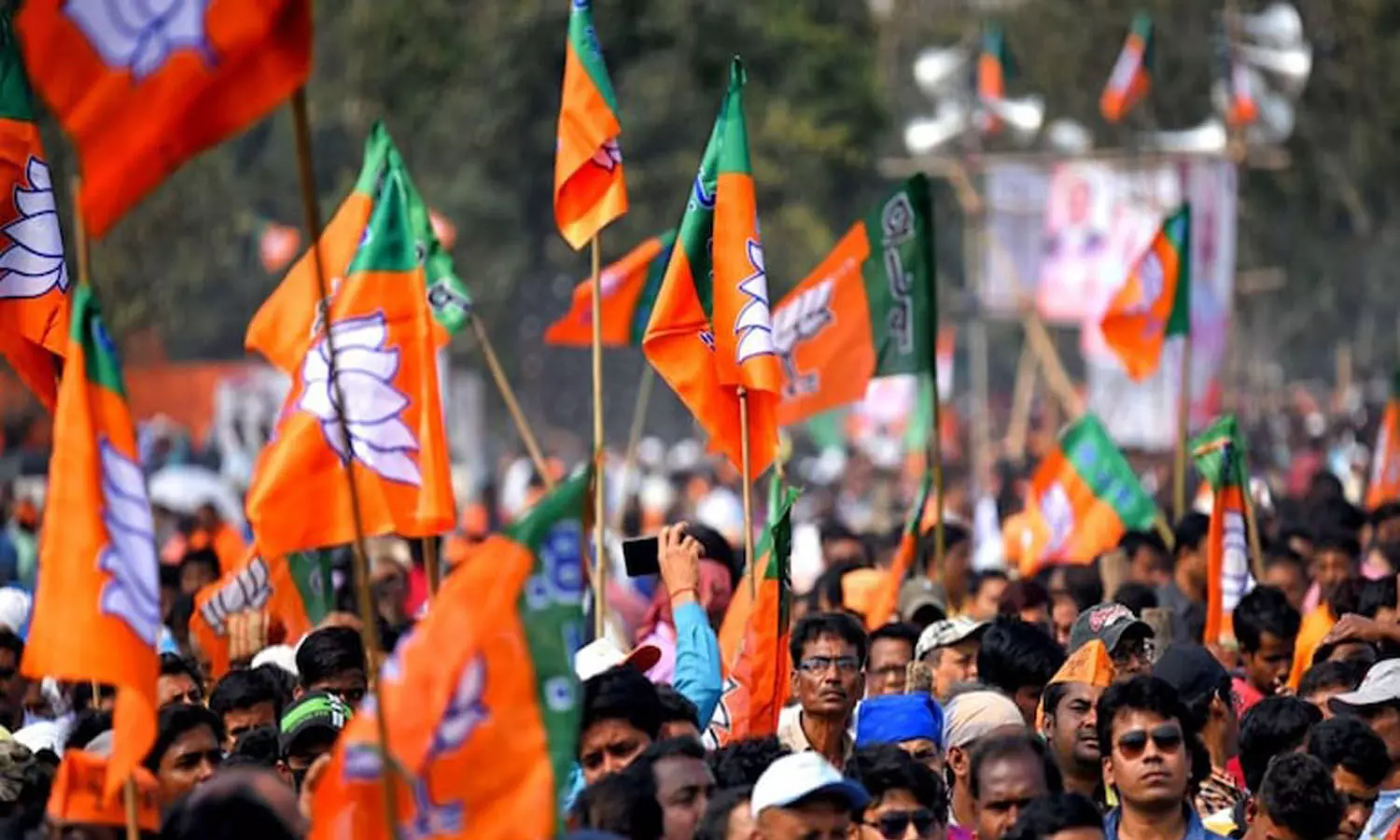TRENDING TAGS :
What factors contribute to the BJP's electoral strength in this election?
Even in the middle of typically expedited democratic procedures, most people remain confident that the elections will provide a solution.
BJP PC: Social Media
Lucknow: What is the current political reference point, particularly in electoral politics? In reaction, Hindutva, fanatical nationalism, and Modi Raj's New Welfarism are the pivotal factors determining the path of Indian politics. A key part of the approaching March 10 election results will be whether anti-incumbency (loss due to being in power) has an influence on the BJP this time around. Is it true that the ambitions stated once again to dominate the politics of Hindutva's wider identity through caste identity politics have been bolstered?
This is true, despite the fact that the topic of how elections are currently used to ensure democracy has grown increasingly crucial. That is still not the most essential question for the vast majority of people.
Even in the middle of typically expedited democratic procedures, most people remain confident that the elections will provide a solution. As a result, whenever elections are held, practically all of the attention of politically aware individuals is drawn to them. That is the case presently, as five states in the country have assembly elections. In reality, polling in three of them has been completed: Punjab, Uttarakhand, and Goa. The last round of polling in Uttar Pradesh and Manipur will take place on the 7th of this month, and, as is customary, the counting of ballots will take place on the 10th of this month in both of these states.
Elections are traditionally seen as the most important manifestation of democracy. It's also seen to be the most effective way to convey the mandate. From this perspective, on March 10, the public's attention will normally be drawn to which party wins in which state, and by what margin. Of course, he will pick who forms the next administration in the state in question. However, the topic of what, and how much, the existing status of the country would alter as a result of creating that administration is rarely discussed. Of course, this is an issue of the country's political economy.
However, we'll save this conversation for another time. However, if the election results on March 10 are to be fully comprehended, a reference point other than previous political events must be used. Indeed, expectations about elections and the political signals that come from them are frequently proven incorrect as a result of failing to take into account today's political reference point. This is worth noting: once upon a time, the functioning of governments in terms of public welfare works served as a point of reference for politics. The concerns of ordinary living were also big political ones at the time. However, with the advent of the Bharatiya Janata Party in Indian politics, this reference point faded into obscurity. Narendra Modi's quality is that he brought this phenomenon to reality. That is, once he was elected Prime Minister in 2014, that reference point shifted dramatically.
Looking at what the reference point of politics, particularly electoral politics, is now, it is apparent that Hindutva, nationalism, and the new welterism of the Modi Raj remain the primary points of choosing the path of Indian politics.
Of course, there are still outliers in certain areas where the BJP's feet have not been able to expand even during the Modi period. However, the BJP has captured at least one-third of the electorate in most regions of the nation through Hindutva and New Welfarism. Since 2014, there has been no evidence of a drop in this circle in places where the BJP has a strong presence in elections. In fact, there have been indicators of this polarisation increasing greater in most instances.
For example, while the BJP did not win a majority in the West Bengal Assembly elections last year, its vote percentage surged nearly four times as much as it did in the 2016 assembly elections.
The unique feature of this new reference point is that the expanding problems of everyday living continue to be irrelevant in determining election outcomes. The Hindutva issue has boosted the BJP's already sizable vote bank.
The vote bank at the national level was 18 to 20% in Modi's previous era. Today, it is unquestionably higher than 25%. These are the voters who are unconcerned with inflation, unemployment, the atrocities of the Corona era, or India's deteriorating international status. Because of his reactionary nature, he believes that the Modi Raj has not only halted but also reversed the improvements that have occurred in the system of social superiority as a result of the democratic constitution's experiment over the years. As a result, they consider this season to be a time of Hindu pride.
Furthermore, a segment of the economically deprived elements of the New Welfare has a notion of Modi raj as welfare. The policy of eliminating public investment with far-reaching implications and giving a portion of it as a direct benefit is known as New Welfare. Investment in health, education, scientific research, human infrastructure, and other areas has been curtailed as a result of this. Before a portion of the money was saved, LPG, housing, direct cash transfers, and other programs were implemented. During the Corona period, the distribution of free grains became an element of this. Not only that, as the elections approach, Uttar Pradesh's Yogi Adityanath administration has created ghee from wheat and rice. Oil, salt, and other items began to be distributed for free. The Hindutva political environment, along with New Welfarianism's economic involvement, makes it impossible to destroy the BJP's electoral power.



